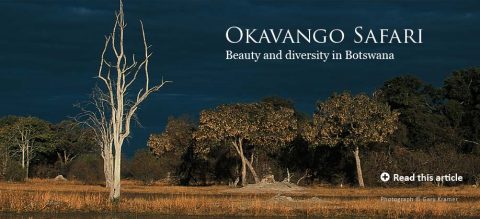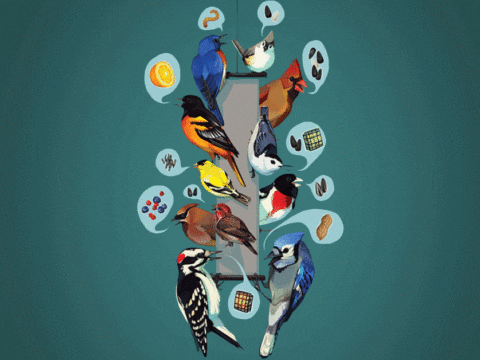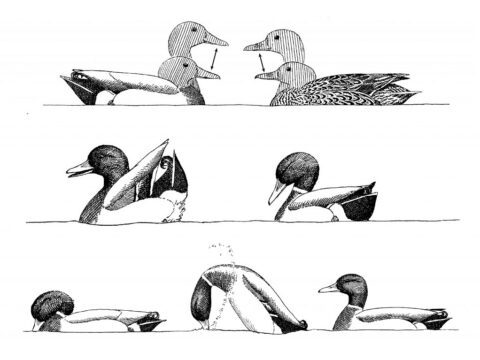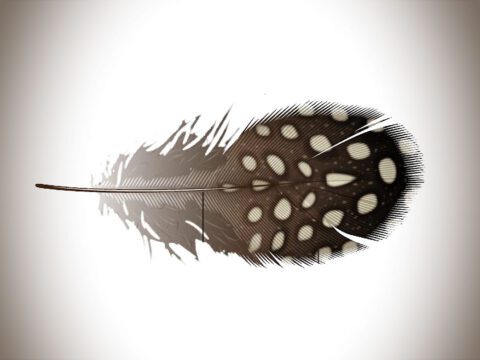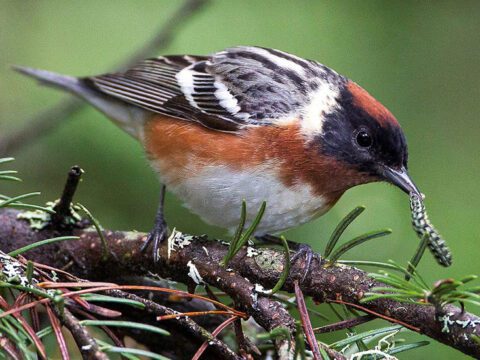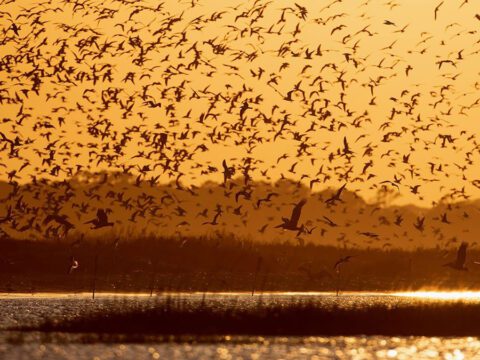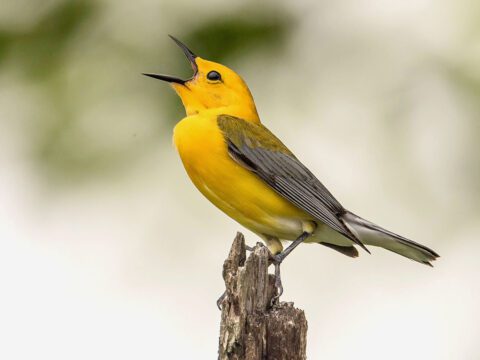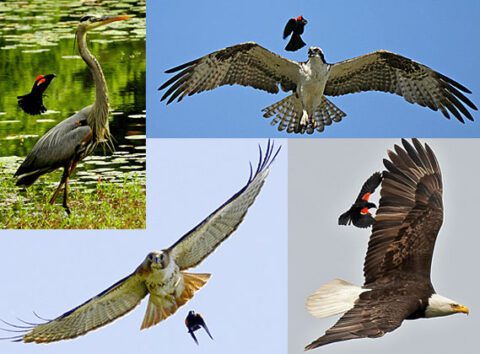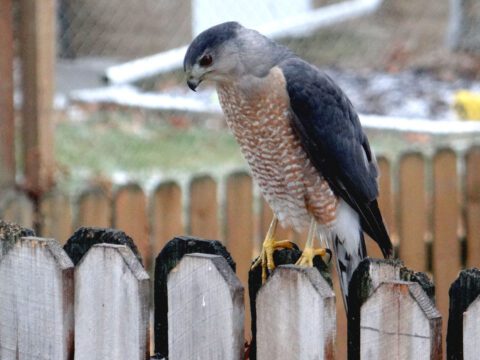Birds in the ‘Burbs—Bolsa Chica Ecological Reserve
By Marie Read January 15, 2009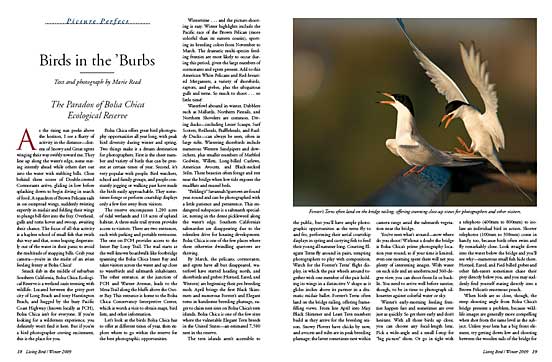
The Paradox of Bolsa Chica Ecological Reserve
As the rising sun peeks above the horizon, I see a flurry of activity in the distance—dozens of Snowy and Great egrets winging their way swiftly toward me. They line up along the water’s edge, some staring intently ahead while others dart out into the water with stabbing bills. Close behind them scores of Double-crested Cormorants arrive, gliding in low before splashing down to begin diving in search of food. A squadron of Brown Pelicans sails in on outspread wings, suddenly twisting expertly in midair and folding their wings to plunge bill-first into the fray. Overhead, gulls and terns hover and swoop, awaiting their chance. The focus of all this activity is a hapless school of small fish that swirls this way and that, some leaping desperately out of the water in their panic to avoid the multitude of snapping bills. Grab your camera—you’re in the midst of an avian feeding frenzy at Bolsa Chica!
Smack dab in the middle of suburban Southern California, Bolsa Chica Ecological Reserve is a wetland oasis teeming with wildlife. Located between the gritty port city of Long Beach and tony Huntington Beach, and hugged by the busy Pacific Coast Highway (known locally as PCH), Bolsa Chica isn’t for everyone. If you’re looking for a wilderness experience, you definitely won’t find it here. But if you’re a bird photographer craving excitement, this is the place for you.
Bolsa Chica offers great bird photography opportunities all year long, with peak bird diversity during winter and spring. Two things make it a dream destination for photographers. First is the sheer number and variety of birds that can be present at certain times of year. Second, it’s very popular with people. Bird watchers, school and family groups, and people constantly jogging or walking past have made the birds easily approachable. They sometimes forage or perform courtship displays only a few feet away from visitors.
The reserve encompasses 1,200 acres of tidal wetlands and 118 acres of upland habitat. A three-mile trail system provides access to visitors. There are two entrances, each with parking and portable restrooms. The one on PCH provides access to the Inner Bay Loop Trail. The trail starts at the well-known boardwalk-like footbridge spanning the Bolsa Chica Inner Bay and takes visitors across the water and up close to waterbirds and saltmarsh inhabitants. The other entrance, at the junction of PCH and Warner Avenue, leads to the Mesa Trail along the bluffs above the Outer Bay. This entrance is home to the Bolsa Chica Conservancy Interpretive Center, which is worth a visit to obtain maps, bird lists, and other information.
Let’s look at the birds Bolsa Chica has to offer at different times of year, then explore where to go within the reserve for the best photographic opportunities.
Wintertime . . . and the picture-shooting is easy. Winter highlights include the Pacific race of the Brown Pelican (more colorful than its eastern cousin), sporting its breeding colors from November to March. The dramatic multi-species feeding frenzies are most likely to occur during this period, given the large numbers of cormorants and egrets present. Add to this American White Pelicans and Red-breasted Mergansers, a variety of shorebirds, raptors, and grebes, plus the ubiquitous gulls and terns. So much to shoot . . . so little time
Waterfowl abound in winter. Dabblers such as Mallards, Northern Pintails, and Northern Shovelers are common. Diving ducks—including Lesser Scaups, Surf Scoters, Redheads, Buffleheads, and Ruddy Ducks—can always be seen, often in large rafts. Wintering shorebirds include numerous Western Sandpipers and dowitchers, plus smaller numbers of Marbled Godwits, Willets, Long-billed Curlews, American Avocets, and Black-necked Stilts. These beauties often forage and rest near the bridge when low tide exposes the mudflats and mussel beds.
“Belding’s” Savannah Sparrows are found year-round and can be photographed with a little patience and persistence. This endangered subspecies is a saltmarsh specialist, nesting in the dense pickleweed along the water’s edge. Southern California’s saltmarshes are disappearing due to the relentless drive for housing development. Bolsa Chica is one of the few places where these otherwise dwindling sparrows are thriving.
By March, the pelicans, cormorants, and egrets have all but disappeared, waterfowl have started heading north, and shorebirds and grebes (Horned, Eared, and Western) are beginning their pre-breeding molt. April brings the first Black Skimmers and numerous Forster’s and Elegant terns in handsome breeding plumage, eager to claim nest sites on Bolsa Chica’s tern islands. Bolsa Chica is one of the few sites where the vulnerable Elegant Tern breeds in the United States—an estimated 7,500 nest in the reserve.
The tern islands aren’t accessible to the public, but you’ll have ample photographic opportunities as the terns fly to and fro, performing their aerial courtship displays in spring and carrying fish to feed their young all summer long. Courting Elegant Terns fly around in pairs, tempting photographers to play with composition. Watch for the Forster’s Terns’ flight display, in which the pair wheels around together with one member of the pair holding its wings in a distinctive V shape as it glides inches above its partner in a dramatic midair ballet. Forster’s Terns often land on the bridge railing, offering frame-filling views. From late April into May, Black Skimmer and Least Tern numbers build as they arrive for the breeding season. Snowy Plovers have chicks by now, and avocets and stilts are in peak breeding plumage; the latter sometimes nest within camera range amid the saltmarsh vegetation near the bridge.
You’ve seen what’s around—now where do you shoot? Without a doubt the bridge is Bolsa Chica’s prime photography location year-round, so if your time is limited, even one morning spent there will net you plenty of interesting images. With water on each side and an unobstructed 360-degree view, you can shoot front-lit or back-lit. You need to arrive well before sunrise, though, to be in time to photograph silhouettes against colorful water or sky.
Winter’s early-morning feeding frenzies happen fast and sometimes are over just as quickly. So get there early and don’t hesitate. With all those birds up close, you can choose any focal-length lens. Pick a wide-angle and a small f-stop for “big picture” shots. Or go in tight with a telephoto (400mm to 800mm) to isolate an individual bird in action. Shorter telephotos (100mm to 300mm) come in handy, too, because birds often swim and fly remarkably close. Look straight down into the water below the bridge and you’ll see why—numerous small fish hide there. Horned, Eared, and Pied-billed grebes and other fish-eaters sometimes chase their prey directly below you, and you may suddenly find yourself staring directly into a Brown Pelican’s enormous pouch.
When birds are so close, though, the steep shooting angle from Bolsa Chica’s bridge presents a problem, because wildlife images are generally more compelling when shot from the same level as the subject. Unless your lens has a big front element, try getting down low and shooting between the wooden rails of the bridge for a more appealing perspective. Or go ahead and break the rules: shoot straight down on the bird for an unconventional view. Adding a polarizer to cut reflections might bag you a unique underwater shot. But be sure your camera and accessories are well secured if you shoot directly down over water.
Tripods and big lenses are a common sight on the bridge, but their owners should be respectful of other visitors and avoid blocking the path. Be aware that passing joggers cause the wooden structure to bounce temporarily. To avoid blurry images, wait until they have gone past.
Birds in flight are a snap at the bridge, whether you’re trying to capture the huge sandpiper flocks that glitter across the water in winter or a single tern flying past with its catch in summer. And you don’t need a giant lens. Shooting with a shorter telephoto—hand-held or mounted on a shoulder-stock—can actually be more successful because you have an unrestricted range of motion. My favorite combination for flight shots is a 400mm f5.6 lens on a Canon 1D Mark III body. The lens is lightweight enough to give me the mobility I need without tiring me out.
If you do use a tripod-mounted super-telephoto for birds in flight, consider a gimbal-type tripod head for optimum mobility. It’s always challenging to keep flying birds in the frame if they suddenly change direction. As an example, flocks of shorebirds and diving ducks usually come in low over the water only to swoop suddenly upward to clear the bridge. The gimbal design, in which the camera and lens combination is suspended rather than sitting on top of the tripod head, gives you a larger range of mobility and greater ease of handling than a regular ball head.
Exposing correctly for white or light-colored birds such as terns and egrets can be tricky when they move across a variety of backgrounds. If you rely on your camera’s auto-exposure mode, the meter will be fooled into overexposing whites against darker-toned backgrounds. Try manual exposure mode instead. Take a meter reading from a mid-toned area in the same light as your subject—at Bolsa Chica I look for a patch of green or brown vegetation. For white birds dial in 1 stop of underexposure, for black–and-white birds such as stilts or skimmers dial in 2/3 stop of underexposure. Leave those settings as they are (unless the light changes of course), and white birds will be correctly exposed regardless of the background.
If you have more time to spend, or if action at the bridge has slowed, there are some other good photography spots around the reserve to check out, depending on the time of year.
Past the bridge on the east side of the loop trail around Bolsa Chica’s Inner Bay is a wire-mesh fence. Beyond this are sand dunes where Snowy Plovers and Least Terns nest in spring and summer. Lighting here is best in the afternoon. Shooting through the fence is possible but needs care to produce good results. Use your longest telephoto lens positioned as close as possible to the mesh. This helps prevent the camera’s autofocus system from focusing on the wire rather than the subject. If you remove the lens hood be careful not to scratch your lens on the wire. Center the lens over one of the mesh openings to avoid image blurring due to out-of-focus wire in the middle of the frame. Use a large lens aperture for a shallow depth of field to render the wire virtually invisible. If possible, select a central autofocus point. You may have to resort to manual focus, especially if you are using a lens that has a short focal length.
If you have a penchant for photographing fast action, head for the tide gate between Bolsa Chica’s inner and outer bays. It’s quite a hike from either parking lot, especially if you’re carrying camera equipment, but with the right combination of light direction and tide cycle, it’s a great place to photograph terns fishing. For unobstructed shooting it’s best to face east, so pick a day when high tide occurs in late afternoon. The rising tide propels many small fish through the tide gate into the Inner Bay, where terns and other fish-eating birds await them. The action is especially fierce in July and early August when terns and skimmers have young in the nest. To render wings tack sharp and splashing water frozen in midair, you’ll need a fast shutter speed, such as 1/2,500 of a second. Conversely, slower shutter speeds result in pleasingly blurred, more artistic effects.
Capturing a tern in the act of jumping out of the water is challenging. A good strategy is to focus quickly on the point at which it enters the water and fire off a burst of shots as it emerges. Concentration and quick reflexes coupled with good lens technique are needed to capture such high-action behavior, and this is another situation where mobility really helps. Your first attempts may be unsuccessful, but the more you practice the better you’ll get.
Another spot to check for potential photography subjects is the Mesa, the high bluff at the northeast end of the reserve, which provides spectacular views to the south and west. Great Blue Herons build their stick nests in the trees here and American Kestrels nest in old woodpecker holes. Check the dead snags for perched raptors, such as Peregrine Falcons. Native wildflowers and shrubs have been reintroduced on the Mesa. Various songbirds nest here in spring and feed on seeds in summer. Anna’s Hummingbirds visit the flowers and have favorite perches where they can be photographed in spring and summer.
Bolsa Chica has something to offer bird photographers of every skill level—easy-to-approach birds to encourage beginners to practice their skills and gain confidence, and dramatic action that will challenge experienced photographers to push their limits. If you love to photograph birds, you won’t be disappointed with this California gem. Experience it once and you’ll promise—as did the state’s famous movie-star governor—“I’ll be back!”
Marie Read is a freelance author and nature photographer based in Freeville, New York. She gratefully acknowledges Bolsa Chica bird photographer Steven Eric Smith for his advice and invaluable information during the preparation of this article.

All About Birds
is a free resource
Available for everyone,
funded by donors like you
American Kestrel by Blair Dudeck / Macaulay Library
